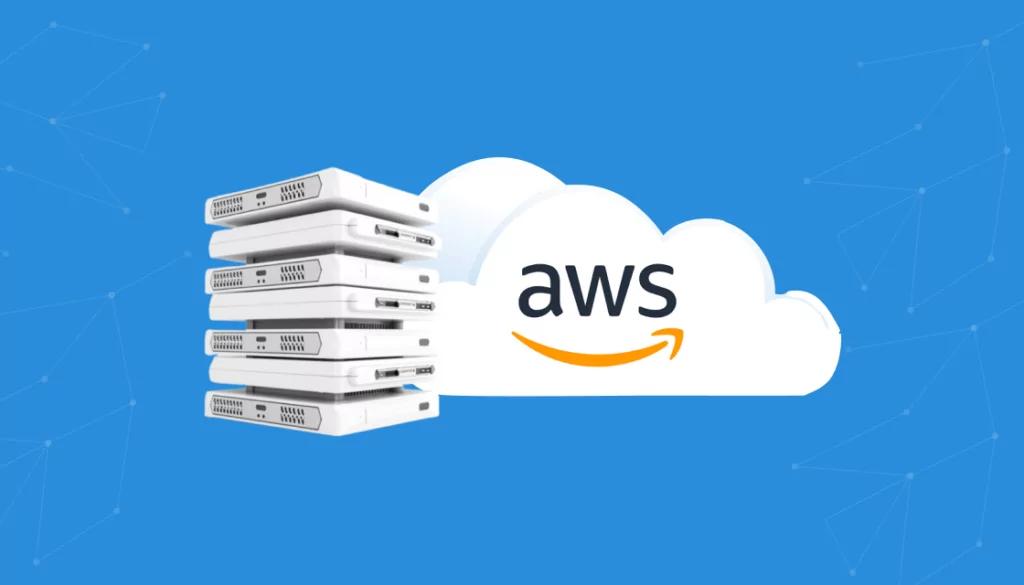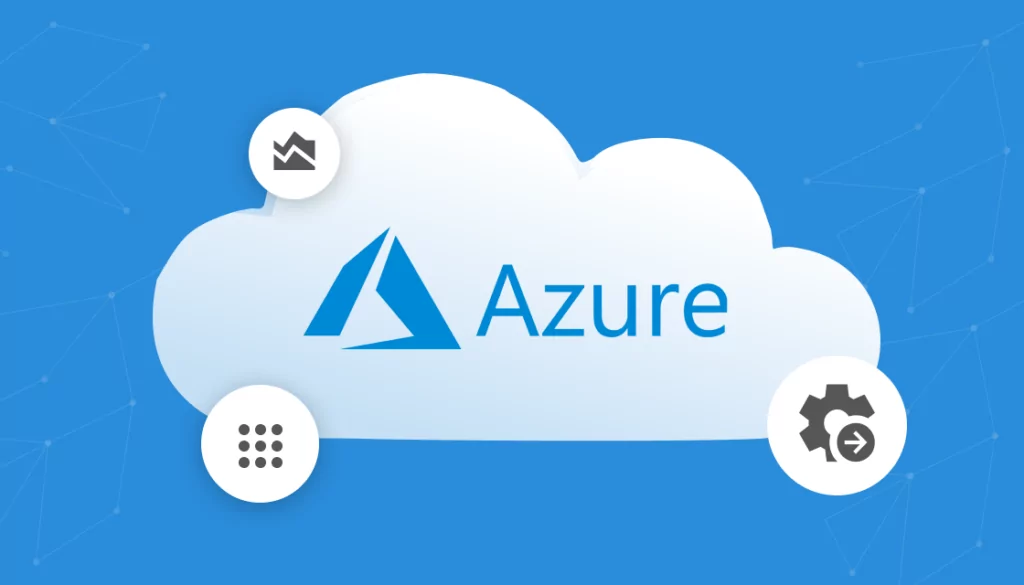The use of hybrid cloud is fast becoming the optimal way to meet the cost and performance demands posed by the widely ranging requirements of the typical corporate application portfolio. Use cases for hybrid have expanded well beyond “on-premises for production, cloud for DR.”
To optimize cost and performance on an ongoing basis, companies often find themselves needing to manage a complex hybrid cloud environment. Hybrid cloud infrastructure management is the new discipline essential to realizing the full benefits of hybrid deployments.
Table of Contents
ToggleThis article explores hybrid cloud, what it is, use cases, as well as common hybrid configurations and their implications for best practices in hybrid cloud infrastructure management.
What Is Hybrid Cloud?
Hybrid cloud is the use of public cloud with a private computing environment. Hybrid cloud can (and generally does) include the use of multi-cloud. A “private computing environment” can mean any or all of self-managed on-premises infrastructure, or a private cloud managed by a cloud service provider residing either on-premises or in a service provider data center. The broadest definition of hybrid cloud would incorporate any SaaS services as well.
Why Hybrid Cloud?
As the capabilities and costs of cloud have evolved, configuring an optimal cloud environment has become a much more nuanced undertaking. In the early days of public cloud, a common use case might have been “on-premises for production, cloud for DR.” Now, with over a decade and a half of public cloud experience under their collective belts, many organizations are building hybrid cloud environments that intelligently mix and match the best attributes of both—configuring hybrid environments that fit the widely varying needs of the corporate application portfolio.
Hybrid Cloud: The “New Normal”
In its Global Hybrid Cloud Trends Report, Cisco described hybrid cloud as the “new normal.” Its survey of more than 2,500 global IT decision-makers across 13 countries found that 82% of respondents have adopted hybrid cloud, with very little variation across countries.
Node4 looked at one of these markets in more detail in their IT decision-maker survey, The Future of Hybrid Cloud. They found that 41% of organizations using public cloud still have applications running on company-owned hardware and 37% on a platform provided by a hosting company. Respondents currently host on average only 39% of their business applications in the public cloud. Overall, they reported a massive volume of applications running in non-public cloud environments, even several years after companies had migrated their first workload.
Moreover, when asked about their future plans, businesses were not optimistic about increasing the share of workloads in their public cloud environments. They expected no change in the percentage of applications running in the public cloud in three years’ time.
While it may be a little early to speak of “peak public cloud,” it is still quite reasonable to assert that hybrid cloud will be around long enough to justify seeking best practices that can be applied to manage this often complex environment.
The Benefits of Hybrid Environments
It’s useful to understand why organizations make use of hybrid cloud. The reasons fall broadly into two categories: “by design” (accessing the benefits of hybrid environments) and “of necessity” (experiencing the limitations of public cloud).
Here are some common beneficial drivers:
1. Business Resilience and Disaster Recovery
Hybrid cloud enables the storage of essential data off site, eliminating the requirement for a secondary location while ensuring fast access in case of emergencies. Additionally, deploying backup applications in the cloud is a quick process. It’s no surprise that CIsco disclosed that hybrid IT environments support 73% of backup and disaster recovery workloads.
2. On-Demand Cloud-Burst; Experimentation
Many applications can experience extremely volatile usage demand. Rather than overprovision private resources, many companies make use of the public cloud to cost-effectively accommodate extreme usage fluctuations above a baseline load. On-demand/pay-per-use providers such as Netflix, Hulu, Uber and Airbnb all make use of public cloud to scale up during periods of peak demand. Some companies also use the cloud to run experimental workloads that would otherwise require expensive upfront expenditure on-premises. Others experiment in the public cloud to test new code in a safe environment without affecting systems of record.
3. More Agile Development
Some organizations are choosing to run development and functional testing environments in the public cloud and run the environments used for non-functional performance testing, deployment testing, and production in a private environment. They do so since development and testing environments are frequently used intermittently, and on-demand provisioning is more cost effective. Cisco cites 70% of application development workloads running in hybrid environments.
4. Managing Security
Hybrid cloud allows for different security arrangements for different use cases, the implementation of segmentation and isolation, and the use of different regions to accommodate any data residency requirements.
The Limitations of Public Cloud
In addition, shortcomings of public cloud can drive organizations to adopt a hybrid approach. Half of the Node4 respondents had migrated a workload back off of a public cloud platform: Cloud repatriation is a common phenomenon. The reasons for doing so include:
1. Latency/Edge Requirements
Some applications have latency requirements that render public cloud a non-starter. For example, there might be a need for local collaboration of very large files (e.g., an engineering team collaborating on very large laser scan files of buildings, etc.) or an edge location (e.g., a retail store or branch) with intermittent broadband connectivity. Among Node4 respondents, 36% cited meeting latency or other performance requirements as a driver for adopting hybrid cloud.
2. Cost
The Node4 survey found that 56% said public cloud cost them more than they had initially thought it would to run, with the preeminent culprits being underestimating the amount of cloud resources, including networking, security, and poor cost control.
3. Compliance Requirements
There may be data sovereignty requirements that cannot be met by public cloud providers; or the information security, storage standards, monitoring features, and logging structure may not be considered adequate to compliance standards.
4. Unsupported Applications
Many applications simply aren’t supported on public cloud platforms. This may be because the application requires specific hardware (e.g., a type of processor) or software (e.g., an operating system) not available on public cloud platforms. Some legacy applications may not be easily migrated to public cloud, requiring significant modifications or complete rewrites to work in a cloud-native environment.
What Is Hybrid Cloud Infrastructure?
So what do common hybrid environments look like? This section looks at three common setups below. These are by no means exhaustive, with many more forms of hybrid cloud, but they illustrate logical use cases along with the challenges and get-rights.
Even considering the following three use cases alone, it is evident that hybrid approaches can be complex. Each use case can necessitate quite different requirements (in dependency management, environment mirroring, workload portability, etc.) and many organizations will have numerous complementary use cases running at the same time.
1. Edge Support
As noted, some edge applications may have latency requirements that cannot be met by the local connectivity environment. Others may be extremely chatty, with a high volume of bidirectional communication required with back-end databases—making public cloud usage expensive. Such applications might be run in a private computing environment, synchronizing asynchronously with other workloads in the public cloud. In such setups, it is important to minimize the dependencies between the edge applications and those running in the cloud environment.
2. Public Development, Private Production
Here, the production environment remains in an existing data center, while the public cloud is used for development and functional testing. Clearly, it is essential that both environments be functionally equivalent to ensure that applications that work in one environment do not fail in the other. The APIs, architecture, and versions of OSs and libraries should be identical across environments.
3. Cloud-Bursting
Using the public cloud temporarily for short duration “bursts” in applications has allowed many organizations to retain and reuse investments in existing infrastructure assets. The cloud-bursting model is relevant both for highly interactive internet applications as well as batch or CI/CD jobs.
Workload portability is key in all use cases—the differences between environments must be abstracted away. In the case of interactive workloads, a load balancer must be implemented to distribute requests across the private and public resources, automatically upscaling or downscaling public cloud resources as it does so.
Common Challenges of Hybrid Cloud
Hybrid estates—by their very nature—can be complex and challenging to design and manage. Here are some of the common challenges faced:
1. Technical Complexity
A hybrid cloud approach engenders the use of multiple platforms and multiple architectures across private and public environments, posing challenges relating to integrating and supporting all of these. The difficulty is compounded by the popularity of multi-cloud approaches—31% of the Cisco survey respondents use between 4 and 10 public cloud providers across their estate.
2. Management Complexity
The hybrid estate is often a highly dynamic one—with organizations moving workloads back and forth between private and public environments on a regular (even weekly) basis. As a consequence, the cadence of design and decision-making accelerates. Infrastructure decisions that were once made every one to three years now need to be considered on a more frequent basis. Management oversight and control is further complicated by the number of third parties involved. Besides the cloud providers, a large number of organizations rely on hosting companies to manage their proprietary physical infrastructure.
3. Security
By their very nature, hybrid approaches can generate distinct security challenges, including: achieving and maintaining clarity of security responsibilities across multiple service providers, understanding and managing the inconsistencies and potential misalignments between public and private cloud security controls, properly securing cloud APIs and data transfer in general, as well as maintaining consistent compliance across all platforms and environments.
4. Talent
It should be no surprise that many organizations struggle to maintain in-house the technical competencies required to manage, unify and secure their public cloud and non-cloud components.
Hybrid Cloud Infrastructure Management
The primary rationale for a hybrid cloud approach is to achieve the “best of both worlds” by optimally trading off the advantages of both public and private environments against their respective shortcomings. Small wonder then that active hybrid cloud management is becoming a management discipline in its own right.
Three key trends are apparent in this more deliberate and conscientious approach to hybrid cloud management: centralization, standardization, and collaboration.
Centralization
Centralization of hybrid cloud management is coming in many guises. To ensure that hybrid cloud estates optimally meet business objectives, many (57%, according to Cisco) have created a Cloud COE. This brings together expertise from IT, finance, security, compliance and operations to guide and support the organization’s cloud initiatives.
The team develops cloud policies and standards, selects cloud technologies, defines governance and compliance frameworks, and manages cloud costs. Some are adopting centralized management tools provided by the cloud vendors (e.g., AWS Outposts, Azure Stack, and Google Anthos) to run and manage services across public and private/on-premises environments in a unified manner.
Those that have introduced such centralization approaches report enhanced application performance, greater operational efficiency, and improved cloud security.
Standardization
Standardization is a common remedy to complexity, and this is no less true in hybrid infrastructure management. Companies are standardizing the tool chains they use (e.g., by adopting containers and Kubernetes) across on-premises/private and public environments to enhance workload portability, the security controls and policies across all environments, as well as the governance standards and policies across environments. Standardization is key to enhancing consistency, interoperability, security, and cost optimization across hybrid estates.
Collaboration
Collaboration is becoming essential to making hybrid work. For example, network reliability in hybrid environments is critical to developers, resulting in much greater collaboration between DevOps and NetOps. In general, greater cooperation between NetOps, CloudOps, and DevOps has for many been key to overcoming the technological and operational challenges of hybrid.
Getting Started
There can be many reasons for adopting a hybrid approach, with different use cases necessitating very different requirements and architectures. The new discipline of hybrid cloud management—entailing greater centralization, standardization, and collaboration—is becoming key to ensuring that hybrid environments emerge and are maintained by design rather than by happenstance.
A critical first step is to comprehensively understand the application landscape of your organization —allowing you to isolate and evaluate those for which a hybrid approach would be beneficial. Faddom is a hybrid application dependency mapping tool that allows you to build a complete inventory of your on-premises and cloud infrastructure—in as little as 60 minutes—including on most of the major cloud providers. Start a free trial today!








